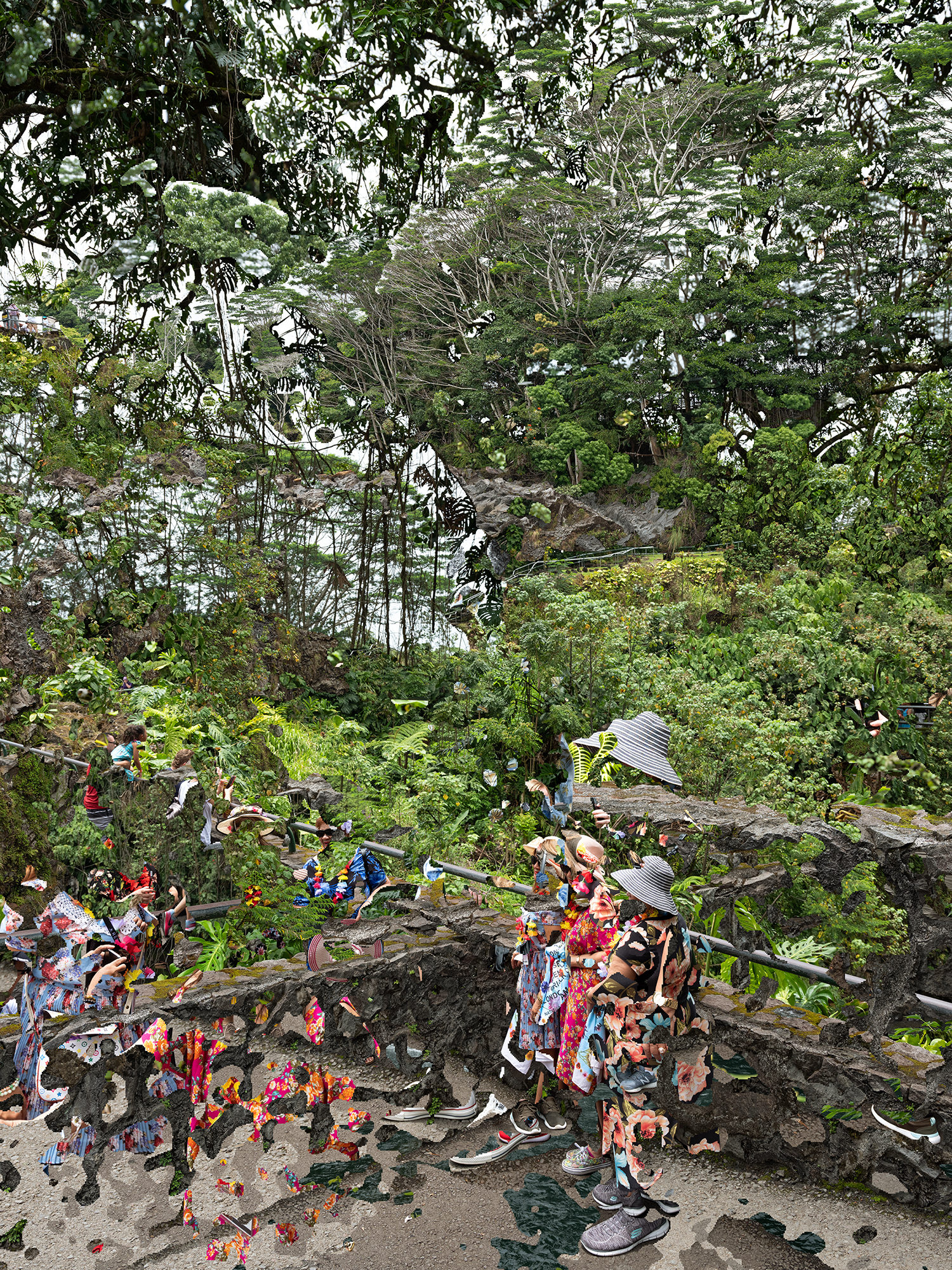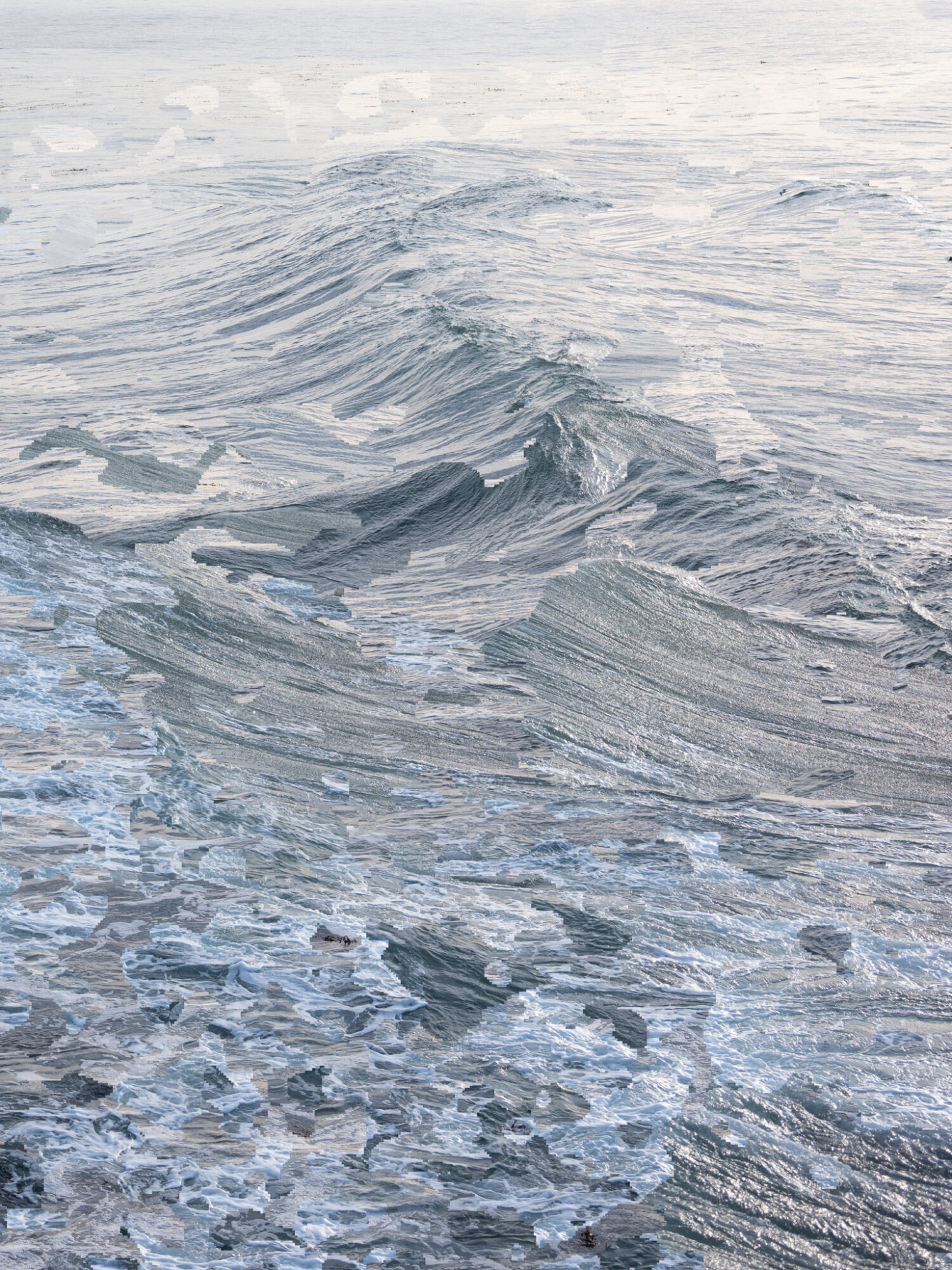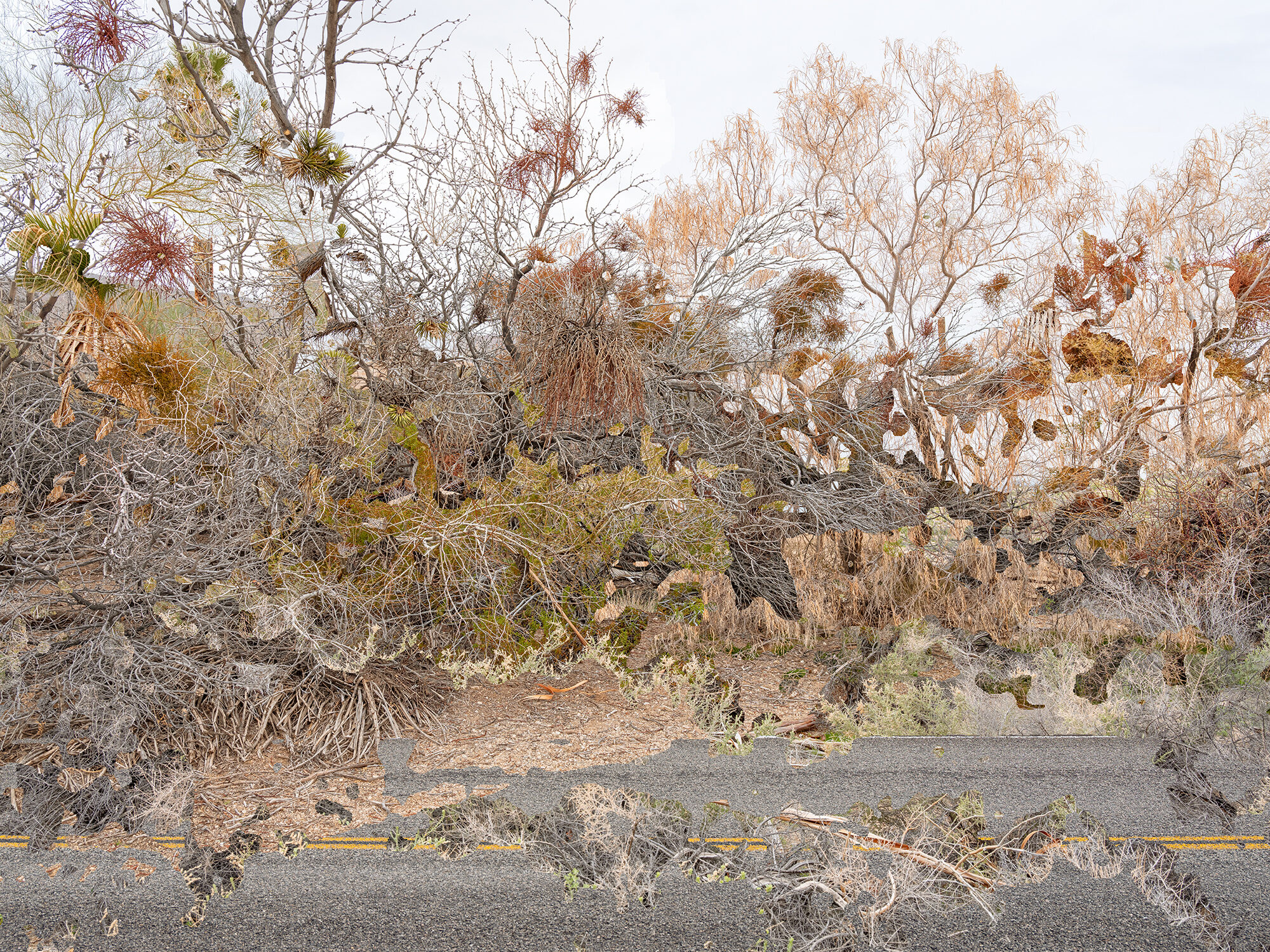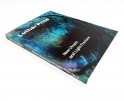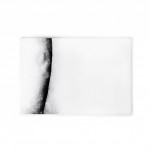Earth Month: Photographers on Photographers, Dennis DeHart in conversation with Laura Plageman
In expanding our celebration of Earth Week, Earth Month: Photographers on Photographers will focus on the work of Eco.Echo Art Collective, a group of international artists deeply concerned with the well-being of our planet beyond human needs. The group’s concerns are climate change and anthropogenic activities’ global impact. Driven by an appreciation for the natural world’s beauty, diversity, and wonder, they believe in the inherent worth of all living beings regardless of their instrumental utility in fulfilling human desires. This week, members of Eco.Echo Art Collective will take time to reflect on each other’s work and how the transformative potential of photography can engage in challenging conversation and affect social change around ideas of humans and our surroundings.
Today, member Dennis DeHart will share his discussions with member Laura Plageman.
Being in a place, while somewhere else at the same time
Laura Plageman is an American artist based in Oakland, CA. Her work investigates the complex relationship between human presence, time, and the photographic medium. Through recursive processes and the blending of multiple moments, her images challenge the notion of photography as a straightforward record of reality, instead presenting a more subjective and layered perspective on the world.
In her recent series, “Reverse of a Ruin,” Laura uses fragmentation and digital manipulation as both visual tools and symbolic elements to investigate ideas of change and disconnection in today’s world. Through her creative process, she explores how these techniques can convey deeper meanings about the transforming landscapes around us.
Laura Plageman’s ongoing “Response” series has been recognized for her unique approach to physical manipulations and re-photography. By treating her prints as sculptural objects, she highlights the materiality of the image and challenges conventional notions of photographic representation.
Laura’s studio is near the Oakland Estuary at the 5th Avenue Marina in Oakland, California. An Oakland native, the area is imbued with memories, including of her dad’s small sailboat, once docked directly across the estuary from her current location. Laura’s father was a land use attorney and antique collector (he has passed away) and she cites his influence on her thinking and relationship to the land and its stories. She mentioned a time exploring her ancestral lands in Texas with him, and how together they searched for evidence of their family’s past. Photographing the landscape, her work transitioned from being a straight document to more of a metaphor for lost memories and entanglements of the past.
She is currently photographing things that wash up along the shore in response to the environment and place. Laura cites being drawn to the quality of light and beauty in the industrial area, which is contrasted by significant pollution. She notes that there is innately plenty of beauty, but also a dark struggle permeating the environment.
Laura’s background includes completing her BA with Wesleyan University, after which she returned to the Bay Area, where she became part of the Bay Area photography / artist scene, including assisting and taking classes at the then California College of Arts and Crafts. Later, she enrolled in graduate school with the newly named California College of the Arts (CCA) and completed her MFA between 2004-2006, where she then held various academic appointments. Larry Sultan was one of her mentors in graduate school and she worked as a studio assistant for Larry.
Her images have been exhibited in galleries and institutions across the United States and internationally at venues including San Francisco’s de Young Museum, the Houston Center for Photography, and Seattle’s Photographic Center Northwest. In 2024, two of Laura’s large photographic works were acquired by LACMA. Her work has been featured in publications including Harper’s Magazine, Phaidon, Juxtapoz Magazine, and WIRED, among others. Laura is represented by DeSoto Gallery in Los Angeles.
Process and Play/Exploration of Materials
‘A photograph is not only an image …, an interpretation of the real; it is also a trace, something directly stenciled off the real, like a footprint or a death mask’-Susan Sontag, (On Photography)
Dennis DeHart: I’m intrigued by how your “Response” and “Reverse of Ruin” series approach the concepts of time and layering. Could you share more about your creative process?
Laura Plageman: My studio practice is my way of reflecting on and responding to my photographs and finding new ways to push them forward. I engage with my photos using both analog and digital techniques and tools, depending on the project. With my on-going “Response” series, I think about layering time through multiple rounds of interaction and re-photography, where each successive image provides feedback for its next iteration. With my newer series, “Reverse of Ruin,” I merge images from different moments in time into one frame, visualizing a complex, interconnected reality and also reflecting on time in a digital climate.
I create digital collages that draw from personal photo archives, and combine multiple perspectives into single composites. I begin with large subsets of my images that capture an idea or tell a story. I then break apart the images using a digital process, which can lead to unexpected fragmentation of the images. Finally, I combine the disparate layers into collages. I enjoy this process of making and rediscovering.
I’m calling attention to the hard, pixelated edges between image fragments, which I see as highlighting the contrast between the digital world and organic forms in nature. I also want to clearly delineate the passage of time and shifting orientations through these juxtaposed moments. I’m thinking about how our experiences and perceptions of the natural world are increasingly mediated by technology.
DD: How do you think about engaging the viewer and challenging their perceptual processes?
LP: Formally, my images are often detailed and complex, but also printed quite large to really open up and invite discovery, asking a viewer to linger a bit. I’d like the viewer to navigate the intricacies in search of recognition, and work against the ways our brains seek pattern recognition — using similar principles to camouflage. Cubist artists were also influenced by similar Gestalt theories. I see a connection between my work and Cubist principles — capturing multiple moments in time in a unified composition, reflecting movements and perspectives woven together.
DD: Can you unpack the conceptual significance of the title, and how it relates to the themes you’re exploring in this photographic series?
LP: The series title “Reverse of a Ruin” is inspired by artist Robert Smithson’s concept of the “ruin in reverse.” Rather than the traditional view of ruins as decaying remnants of the past, Smithson saw new suburban construction sites as embodying a kind of inverse ruination – the buildings were “rising into ruin before they are built,” representing a loss of promise about the future rather than nostalgia for the past. In a similar way, this photo series explores how human impacts on the environment, like climate change, are creating a “reverse of a ruin” – a present-day process of disruption and transformation that is the opposite of the romantic notion of ruins. The images aim to reframe our perspective, shifting from future catastrophe to the ongoing environmental changes unfolding before our eyes.
DD: To what extent do you see your work as extending or reinterpreting this Cubist approach to temporality? How does your layering of moments and perspectives engage with the perceptual and philosophical implications of depicting time in this non-linear, synchronous manner?
LP: I think of the work as a meditation on the contrasting scales of human timelines versus the vast expanse of deep ecological time. I think about the outsized impact our species has on the natural world despite our fleeting presence. Although human life cycles are brief, our footprint and consumption have significant effects on environments evolved over millennia. By breaking down landscapes into layered compositions, I encourage viewers to slow down and reflect on the many fleeting moments that shape our perceptions and memories of a place.
Over the years I’ve explored how photographs serve as both records of time and subjective perspectives, presenting moments that are simultaneously real and interpreted. In this series, each individual photographic fragment is also an indexical trace, capturing aspects of the real world at specific moments, but when recombined the direct connection to a single reality is disrupted. A lot of my work relates to this slippage between the indexical and the real.
DD: Your work often explores human impact and tourist culture, themes that have been subjects of critical inquiry in art and visual culture. This reminds me of Lucy Lippard’s book “On the Beaten Track,” which examines the complex relationships between tourism, art, and place. Have these themes been long standing interests in your practice, and how do you see your work engaging with broader conversations around the representation of place and the influence of tourism?
LP: In my earlier “Response” series, I explored some similar themes, mostly related to human presence — drawing attention to how people shape and affect their environment, whether photographing invasive species, or well-worn sites.
Tourism culture, and the spectacle of places, are important themes in my work. I am often playing the role of both tourist and documentarian, and want to capture the scene in front of me, to see it as a photograph. I’m fascinated by the stories and histories of places, the marks humans leave behind — the evidence or erasure of their presence.
Photography has long shaped how we perceive and experience places, transforming them into objects of desire and fueling the growth of tourism. In today’s digital age, this process has intensified, with a constant flood of images mediating our relationship to the world in increasingly complex ways. I’m drawn to the challenge of creating unique images in well-documented locations while acknowledging my role in a long tradition of place-based image-making. Through layering and manipulation, I’d like to create photographs that offer a more holistic perspective on the places and experiences that define our lives, playfully drawing attention to the serious issues and complexities of an increasingly complex world.
In conclusion:
“One of the main principles of today’s aesthetics is the connection between different planes that official representation has considered as separate, the creation of circuits putting different levels of reality into contact, bringing together spheres that are distant from one another in the common imaginary.”-Nicolas Bourriaud, Inclusions, Aesthetics of the Capitalocene
DD: Talking with Laura and studying her work has been a gift. The process of creating this article was both a conversation and collaboration between Laura and I. The title for this article, “Being in a place, while somewhere else at the same time” is a quote that came about as Laura and I were talking on the phone, with her at her studio in the Bay Area and myself in Washington state. Her quote aptly sums up how our lived experiences shape our realities, and the role of technologies in allowing us to experience multiple real and simulated realities simultaneously, for better and worse. Laura’s work is beautifully crafted, intelligent, and can be appreciated and read on multiple levels. Thank you for sharing Laura.
Laura Plageman is a photographic artist based in Oakland, CA.
For more about Laura’s work, view her website, https://photolp.com/ and follow her on Instagram:@lauraplageman.
Dennis DeHart is a photographic artist and educator based in Washington State. His interdisciplinary projects are informed by the connections, conflicts, and intersections of the natural and cultural worlds.
Learn more about Dennis’ work on his website, www.dennisdehart.com,and follow him on Instagram: @ddehart.
Posts on Lenscratch may not be reproduced without the permission of the Lenscratch staff and the photographer.
Recommended
-
Earth Week: Casey Lance Brown: KudzillaApril 25th, 2024
-
Earth Month: Photographers on Photographers, Dennis DeHart in conversation with Laura PlagemanApril 16th, 2024
-
Luther Price: New Utopia and Light Fracture Presented by VSW PressApril 7th, 2024
-
Artists of Türkiye: Eren SulamaciMarch 27th, 2024
-
European Week: Sayuri IchidaMarch 8th, 2024

